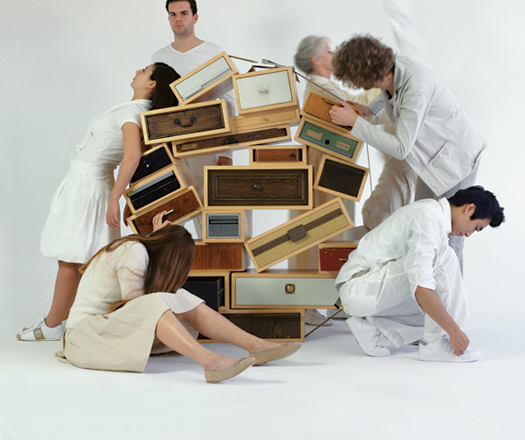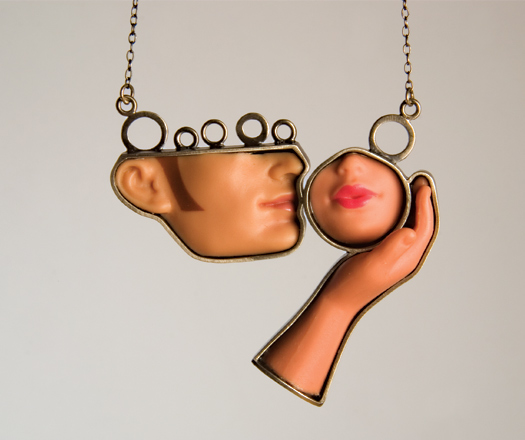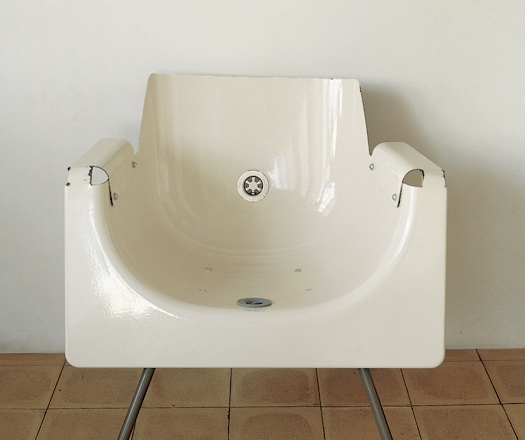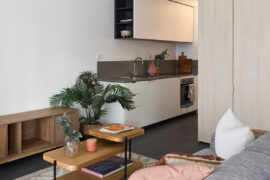Design fad or sustainable solution? Is the shift towards salvage design a temporary whim or a real revolution? Kirsty Máté investigates.
October 27th, 2008
This article appears in Issue #34 of Indesign Magazine, available from all good newsagents and book stores.
Salvaging products and transforming them into other products is not new. The Anglo-Saxons re-used materials from abandoned Roman buildings for centuries.
We have re-used materials for crafts and toys for generations – cotton reels, ice cream sticks, socks and boxes have given children hours of imaginative fun. Wars always bring out our creative thrift, encouraging us to create everyday luxuries when raw materials are scarce. After all, what would Scarlett O’Hara have worn if it weren’t for the green velvet curtains?
Now, however, there is a plethora of designer products on the market using salvaged materials. Perhaps spurred on by the new urgency to save our planet, designers have uncovered a seemingly limitless resource of materials for new creative challenges. Perhaps it’s just the next design fad. Whatever the reason, it’s difficult not to find an example of salvage design in recent design exhibitions, books, magazines and websites.
So, where does today’s salvage design originate from? According to Suzanne Seriff and Charlene Cerny in Recycled Re-Seen: Folk Art from the Global Scrap Heap, salvage design can be defined as products formed from “…industrially produced consumer discards and their subsequent transformation”, into a new object. That is, in a consumerist society of indulgence and wealth, one person’s waste becomes another’s treasure…
The concept is not confined to a particular populace and ignores geography, gender and nationality. The collection of bi-products from mass production can be found from urban New York to the depths of the Papua New Guinean Highlands. However, the influences of mass production, planned obsolescence and the mental attitude of the consumer have changed the value of objects in differing societies.
This difference can be highlighted by a photograph taken by anthropologist Michael Leahy in the early 20th century, of a man from the Wabag region in Papua New Guinea, wearing an aluminium Kellogg’s biscuit tin on his head.
According to Seriff and Cerny, in the Wabag culture, large, bright and shiny ornaments represent health, well-being and sexual attractiveness. For people in Western consumerist societies, it’s amusing to see a man proudly wearing what we consider waste, something we no longer value, as an adornment of sexual attractiveness and high value…
To read the rest of this and other great articles get your copy of Indesign #34, out now or subscribe online here
Hero Image: Re-cycled bag made of can ring-pulls by Escama

’Chest of Drawers’ by Tejo Remy for Droog

’The Kiss’ by Margaux Lange Photo: R DeSantis

’Bath and Beyond’ chair by Reddish
INDESIGN is on instagram
Follow @indesignlive
A searchable and comprehensive guide for specifying leading products and their suppliers
Keep up to date with the latest and greatest from our industry BFF's!

Sydney’s newest design concept store, HOW WE LIVE, explores the overlap between home and workplace – with a Surry Hills pop-up from Friday 28th November.

At the Munarra Centre for Regional Excellence on Yorta Yorta Country in Victoria, ARM Architecture and Milliken use PrintWorks™ technology to translate First Nations narratives into a layered, community-led floorscape.

For those who appreciate form as much as function, Gaggenau’s latest induction innovation delivers sculpted precision and effortless flexibility, disappearing seamlessly into the surface when not in use.

In an industry where design intent is often diluted by value management and procurement pressures, Klaro Industrial Design positions manufacturing as a creative ally – allowing commercial interior designers to deliver unique pieces aligned to the project’s original vision.

Good Design Australia is calling for entries to the 2014 Good Design Awards (formerly the Australian International Design Awards) and invites you to be part of the biggest celebration of design and innovation for 2014

That’s a Wrap! Sydney Indesign 2017 is done and dusted – but we don’t need to tell you that, you were there. Pics or it didn’t happen? Don’t worry, there are plenty

With staff fully assimilated to the rhythms of agile working, how do we begin to offer further flexibility? In its Brisbane headquarters, NAB looks to seamlessly align staff with space, giving them the room – quite literally – to physically and mentally ‘flex’. Designers Wood Bagot strove to bring physical space and human behaviour into perfect sync.
The internet never sleeps! Here's the stuff you might have missed

Ra:tio café blends calm interiors and lush outdoor spaces through VAL Atelier and The Pinewood Studio’s refined, contemporary design.

Boronia Apartments in Waterloo, designed by TURNER for City West Housing, delivers 74 affordable rental homes that combine sustainable design with long-term community-focused living.

MillerKnoll releases the 2025 Better World Report showcasing how design can drive meaningful change through measurable progress across social, environmental and governance initiatives

At the Munarra Centre for Regional Excellence on Yorta Yorta Country in Victoria, ARM Architecture and Milliken use PrintWorks™ technology to translate First Nations narratives into a layered, community-led floorscape.